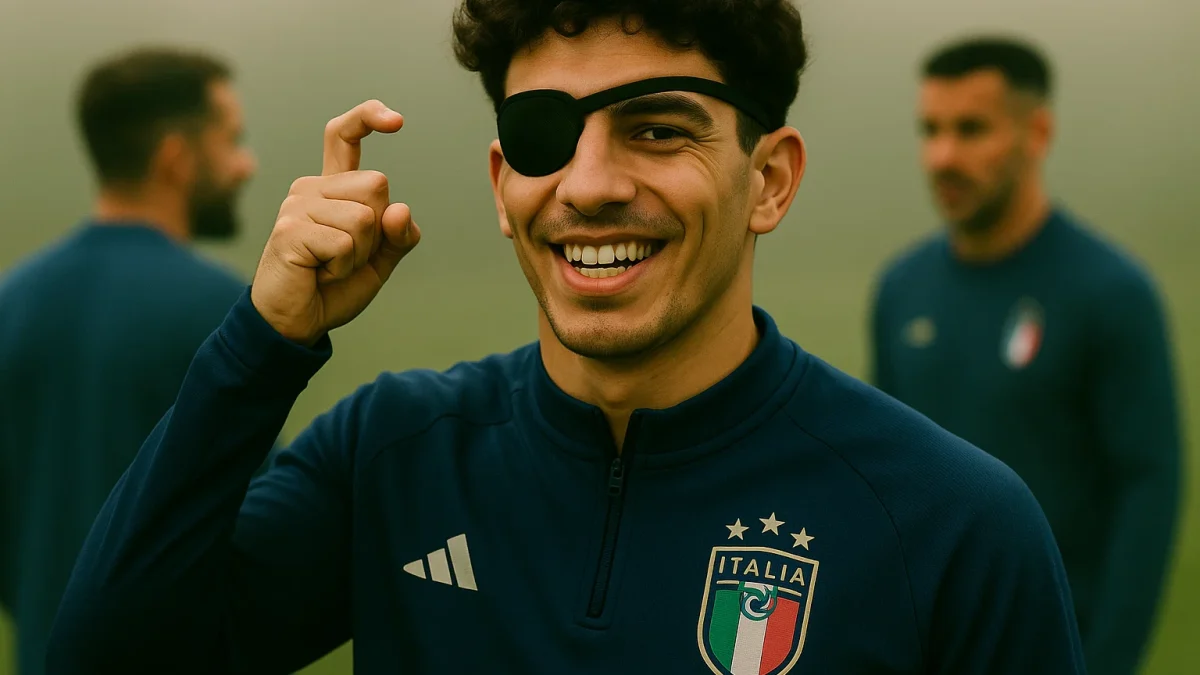
Italy’s youth setup produced another debate this month when images of national-team prospects training with one eye covered ricocheted across social feeds, prompting pirate jokes, eyebrow-raises, and a genuine question about whether limiting sight can sharpen the rest of a player’s game.
The session belonged to the Under-21s, coached by Silvio Baldini, not the Under-20s currently at the World Cup in Chile, although the timing ensured the conversation spilled into that tournament too.
Baldini, appointed in July, has a track record for offbeat methods from club stops like Pescara and Catania. His U‑21 group trained in short blocks, first covering the dominant eye, then the other, and removing the patch —an approach he and others trace to combat sports. The idea borrows from the routines boxers use to mask their vision and force cleaner reads. The stated aims are improved concentration and coordination, plus making hard effort feel easier for short bursts.
Scientifically, the idea is not pulled from thin air. Research on “visual occlusion” and stroboscopic training suggests that restricting or intermittently disrupting vision can nudge the brain toward more efficient information processing, enhancing short‑term visual memory and certain attention measures, with some carryover to on‑field tasks.
Studies in football environments report altered spacing and decision patterns during small‑sided games when vision is partially blocked. Evidence remains mixed and context‑dependent, but there is enough to justify brief, targeted use rather than a gimmick.
One eye covered, both eyes open
The public reaction split along familiar lines. Many turned the images into a running joke about swashbuckling Azzurrini and a certain teen striker’s new nickname, while others called it “bro science” or asked how masking an eye could help in a 360‑degree sport.
A quieter camp pointed to benefits they’d felt in training that emphasize scanning without 100% vision, especially for midfielders who live by shoulder checks. Coverage that framed the session as “Pirates or Azzurri” captured the mood. Still, beyond the punchlines, the question is whether the drill is concise, purposeful, and integrated with football problems rather than performed for spectacle.
It is also worth clarifying the team identities. Baldini leads the Under‑21s through European qualifying this fall, a pathway that doubles as Olympic qualification. Carmine Nunziata, meanwhile, returned to the Under‑20 bench and took Italy to Chile 2025, where the Azzurrini exited to the United States in the Round of 16 on October 9. There is no public evidence that Nunziata’s squad used eye‑patch drills in Chile; the online swirl arrived at the same time.
So does it work? The best answer is guarded.
Stroboscopic and occlusion protocols can train attention, anticipatory timing, and dominant‑eye awareness, but gains are task‑specific and fade if overused or disconnected from football actions. A recent systematic look across sports found benefits for anticipation and decision‑making under constrained vision, along with sober reminders about individual variability.
For elite players, short bouts folded into positional games that demand scanning, timing, and body orientation make the most sense.
In that light, Italy’s experiment reads less like cosplay and more like a coach using a constraint to provoke better habits under pressure. Italy has long produced coaches who tinker with method, from age‑group veterans to modern innovators.
For more historical context on the lineage of Italian tacticians, see Italy’s best managers of all-time. And if you are planning a football trip that overlaps with youth fixtures or national camps, Italy’s 11 best football stadiums to visit in 2025 is a handy companion.
Whether the patches stay or disappear, the bigger question endures. Can Italy’s youth pipeline keep turning curiosity and constraints into players who process the game faster than their opponents? Drills like this only matter if the answer is yes. The goal isn’t a viral training clip; it’s a midfielder who sees the pass (like Messi) before the opponent opens his stance.